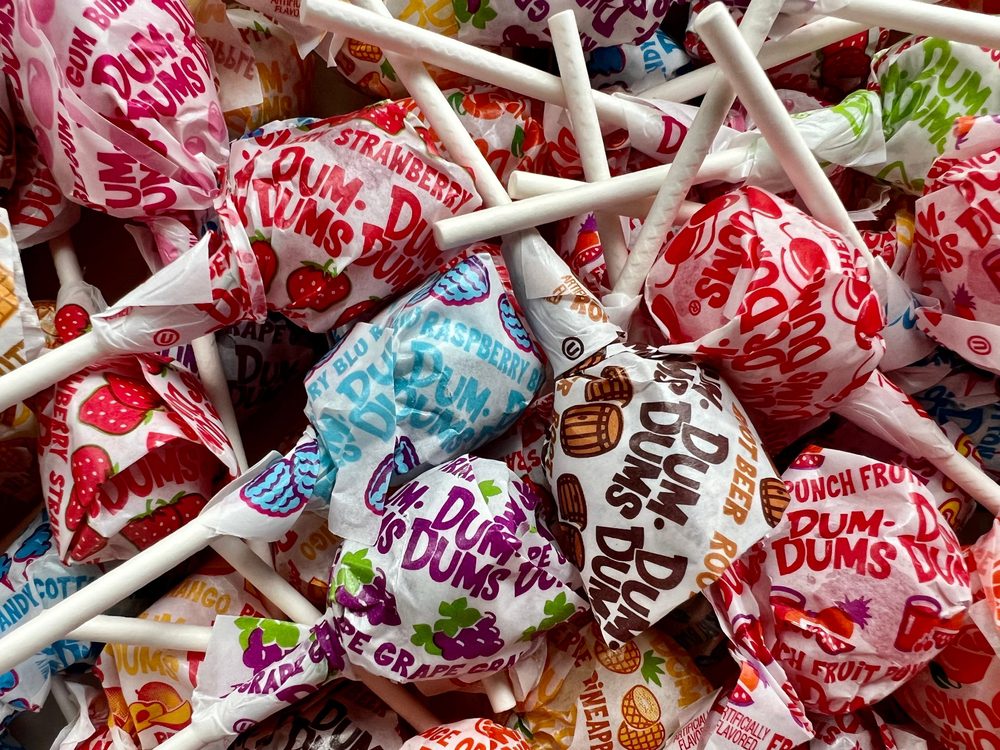Perhaps the most telling image for consumer products marketers of the ’90s was captured the decade before, when a grass-skirted Sam Walton danced the hula down Wall Street in 1984.
Walton promised the terpsichorean turn to Wal-Mart employees when the company hit a pre-tax profit of eight percent, and in ’84 he shimmied his way into business history. It’s the kind of prank good promotions are made of.
But Wal-Mart never staged an antic without a solid business strategy underneath. The conservative suit under Walton’s skirt illustrates Wal-Mart’s legacy to consumer promotion: Business first, flash second. It’s a philosophy that has evolved over a decade, bringing the rest of the industry with it.
Wal-Mart took charge in the ’90s after explosive growth throughout the ’80s, when sales rose from $1.2 billion to $25.8 billion. Once the chain established its own brand, it rewrote the book on promotion marketing. >From EDLP to “retailtainment,” the Bentonville crowd has brought packaged goods promotion full-circle onto a more solid foundation. If it’s happening at Wal-Mart today, it’ll be common practice five years from now – first in packaged goods, then beyond.
Wal-Mart has given promotion marketers a no-nonsense formula that starts with consistent low prices (thanks to efficient operations and scale) and then layers on events that engage consumers and build brands – the store’s brand as well as the product’s.
“We want to enhance the shopping experience in our stores for our customers,” says Wal-Mart vp-marketing Mike Cockrell. “It’s not always about selling merchandise, but rather making Wal-Mart a fun place to shop.”
“Wal-Mart helped reinvent the consumer promotion business by moving away from national promotions to more account-specific, equity-building initiatives customized to the store’s specific needs,” says Don Stuart, partner at consultancy Cannondale Associates, Wilton, CT. “Trade promotion spending is down, and account-specific spending is up. Wal-Mart drove that trend.”
The chain set the tone as the decade began under Every Day Low Pricing, a phrase coined in the mid-’80s and evangelized by Wal-Mart. That, coupled with industry-wide Efficient Consumer Response initiatives (ECR), helped most marketers cut operating costs to lower consumer prices and improve profit margins. Wal-Mart pressured marketers to shift promotion budgets to the bottom line in order to give the retail giant the lowest possible prices. It introduced cross-docking and other efficiencies. It demanded better logistics, and ended the self-defeating cycle of price hikes, coupons, and temporary price reductions.
Wal-Mart’s own ad spending more than tripled as the chain grew, from $52 million in ’89 to $241 million in ’98. Promotion spending keeps strict pace with sales. “We try to be as efficient as possible and remain a low-cost operation,” a spokesperson says.
THE ULTIMATE CO-MARKETER
In 1992, Wal-Mart and Procter & Gamble introduced co-marketing, now Everyman’s strategy. From exclusive multi-packs (like P&G’s new Pringles holiday-themed mega-cans for Sam’s Clubs) to co-branded TV, Wal-Mart and its partners defined co-marketing. At least 150 packaged goods companies have an office in or near Bentonville to serve Wal-Mart. P&G has more than 100 staffers there.
Packaged goods companies embraced co-marketing and carried it to supermarkets and drugstores. The strategy has since spread to consumer electronics, apparel, and computer hardware. But few other retailers have become a co-marketing verb, as in, “We need to Wal-Mart this campaign.”
“The first question for any [idea] is always, `Is it Wal-Martable?'” says Mike Wiglesworth, partner at SAI Marketing, Huntingdon Valley, PA. “They’re the ultimate co-marketing brand.”
In ’96, Wiglesworth worked on Coca-Cola’s Olympic Torch Run campaign while at now-defunct Hadley Group. Coke’s sponsorship of the Torch Run piqued Wal-Mart’s interest like no other property had. The company created postcards for consumers to send athletes, then gave the cards to Wal-Mart to sell. Wal-Mart made nearly $300 per pack of cards, and Coke got the distribution it wanted.
The Torch Run route was “a squiggly line from L.A. to Atlanta,” Wiglesworth recalls. The rationale was to run through the Heartland. The real reason, though, was “to go past every Wal-Mart there was.”
At the end of the decade, Wal-Mart’s promotion philosophy comes full circle from a price-only focus to retailtainment, which ranges from Warner Bros. and the U.S. Postal Service’s stamp-cancelling stations to Fox Kids Network’s inflatable Power Rangers tour. The parking lot’s open for manufacturer events – as long as the product’s on shelf and the prices are low.
Wal-Mart’s influence with manufacturers is so strong that some consider it a stranglehold. When the retailer pressured packaged goods companies to divert co-marketing funds to cut prices further, many companies balked. Wal-Mart agreed to leave budgets alone, but now dictates how manufacturers spend it, says a source familiar with the chain’s co-marketing process. Wal-Mart will set joint strategy with manufacturers, but takes over creative development and execution, the source says.
“Wal-Mart knows its own equity inside out, and they’re using manufacturers’ money to drive only that,” the source says. “For the most part, agencies won’t be able to execute their clients’ programs with Wal-Mart in the future.”
“It’s our intent to work with suppliers in a manner they find amenable and productive,” says spokesperson John Bisio. “We only hope to enhance our relationship with suppliers and we hope they would tap as many resources as they can to create better marketing. We believe in synergy. That doesn’t involve carving out the roles of other agencies. By and large, our practices with suppliers are respectable.”
It makes sense for Wal-Mart to handle creative and execution “because they know their equity, and can execute well in-house,” says Andy Murray, principal at ThompsonMurray, the Fayetteville, AR, agency that helps P&G develop co-marketing programs for the chain. “Wal-Mart is doing a better job [than in the past] at in-store marketing and connecting with shoppers.”
Others say Wal-Mart isn’t as bad as Target, Home Depot, and other chains that enforce strict clean-store policies. Wal-Mart has loosened P-O-P restrictions, and generously displays “wow” items, district-level features. That’s a mixed blessing, though, since manufacturers must fund price cuts that sometimes cost more than the display space is worth.
Wal-Mart offers some resources, too. Its Retail Link database gives about 7,000 manufacturers store-level data on their own products. Marketers are supposed to use it to improve marketing and operations at Wal-Mart. Most use the data for logistics, though, and have yet to maximize it for marketing.
Grueling for grocers
Wal-Mart has forced grocers to get stronger or get out. Supermarket consolidation snowballed last year as grocers compiled enough purchasing clout to compete with Wal-Mart prices. The $25 billion-plus worth of grocery mergers last year has been tough on smaller players, but it doubles the strength of new companies. Multiply Albertson’s byAmerican Stores (an $11.7 billion buyout), or Kroger by Fred Meyer (an $11.8 billion deal), and you get near-national chains with greater buying clout. In 1990, the top 10 chains accounted for $271 billion in sales, 40 percent of total supermarket volume, per Trade Dimensions, Wilton, CT. Last year, they sold $354 billion, or 50 percent. Wal-Mart hit the list as the sixth-largest supermarket chain.
“Wal-Mart is the only national supermarket brand, and it came from another class of trade,” points out Scott Taylor, Trade Dimensions group vp-sales and marketing. “They’ve forced marketers to understand what national marketing is about, even though Wal-Mart distills it down to a local level.”
Wal-Mart has improved grocery promotions two ways. First, bigger supermarkets get more attention from packaged goods companies, who reorganized sales teams by retailer instead of brand. Second, the discipline Wal-Mart instilled in manufacturers spills over into grocery, so supermarkets get better ideas and execution than they did 10 years ago.
The next 10 years
Wal-Mart won’t let grocers rest easy. Its five small-scale Neighborhood Markets are doing well, and the chain likely will expand with an estimated eight to 12 stores in 2000. The giant will keep manufacturers on their toes, too, as it expands private label with brand extensions like Parent’s Choice.
Wal-Mart also will continue global growth, including global pricing. The chain is in the process of negotiating single worldwide pricing and relocating Bentonville-based buyers to points around the globe. It has 900 stores in non-U.S. markets (mostly Canada and Mexico) and is expanding quickly with new stores and acquisitions – like the high-profile June buyout of Asda’s 230 grocery stores in the U.K.
Outbidding U.K.-based retail outfit Kingfisher to buy that country’s No. 3 supermarket chain sent a strong message that Wal-Mart is big enough, strong enough, and smart enough to write the rules for everyone.
Those rules have been a good growth plan for promotion so far.
Wal-Mart’s vision may be stronger than that of many marketers, but hindsight is always 20-20. VP-marketing Mike Cockrell mulls the reasons behind Wal-Mart’s success.
Q. How has Wal-Mart’s promotion philosophy changed during the decade?
A. Perhaps we’re a little more sophisticated, but not so much that our customers aren’t able to feel relaxed [and] enjoy themselves in our stores. We partner with our suppliers, feature holiday-oriented events, get involved in our communities. This is all very hometown-driven. At the same time, we’ve come a ways from the free donkey rides and free sliced watermelon event we featured in our Harrison, AR, store parking lot in the early 1960s.
Q. What has Wal-Mart learned about consumers and about marketing in the last 10 years?
A. We believe customers want to … feel a connection with associates in their store, their community. Take our Good Works Program: We need to let our customers know that our stores have charitable programs … that benefit their hometowns. The promotion of Good Works also lets our associates know they are doing something important and appreciated. We also are able to achieve that [connection] through retailtainment – our Oreo Stacking Contest, Grandparents Day, our Wal-Mart Live broadcasts of exclusive concert performances from Garth Brooks, Britney Spears, Faith Hill, and others.
Q. Why has Wal-Mart been so successful getting packaged goods companies to partner on promotions and tailor campaigns?
A. That’s the result of our marketing managers cultivating strong, more tandem-driven relationships with buyers and suppliers. They explain up-front what the parameters are at Wal-Mart, what we expect out of the promotion, what we are able to do at our stores with respect to operations. We are clear about our needs and we explore opportunities with each supplier by knowing what merchandise they bring. This ensures a good fit and there are few surprises as a result.
“While [Nabisco’s] Oreo Stacking Contest may not have originated with Wal-Mart, it has certainly flourished with our involvement. That’s because we keep it simple. We keep it fun. And it doesn’t hurt to be able to promote that contest in so many communities. The people at Nabisco get to know Wal-Mart, and our marketing managers and buyers get to know them. They understand our focus on retailtainment.
Q. What role do marketing managers play in promotion?
A. Ideas often originate with marketing managers, who also coordinate the marketing plan to be executed in stores. Our success is really the result of this collaborative effort that typically begins with our marketing managers, but sometimes with suppliers or buyers. [Take our September] Grandparents Day. The attention we give it has helped put it on the map with our customers and the general public. Its primary purpose is to do something good for seniors in our communities.
Promotions are coordinated by marketing managers, but managed at store level. We give stores a core program and challenge them to enhance it. Ninety-nine percent of the time, they come up with something even more impactful. For instance, they take a Halloween costume contest and expand it so that more children and parents can participate.
Q. What promotion has been Wal-Mart’s best?
A. All our promotions have served us and our customers well. Not every promotion has sold a lot of merchandise, but that’s all right. Most times it’s about retailtainment … letting customers know Wal-Mart is a place for socializing. Our FLW [fishing tournament] weigh-ins are popular in that way, as was a promotion we had several years ago featuring the world’s largest popcorn ball. We did that one with a microwave popcorn supplier and the Boy Scouts of America. We didn’t sell a lot of popcorn, but that wasn’t our goal. The goal was to have fun.



 Network
Network

